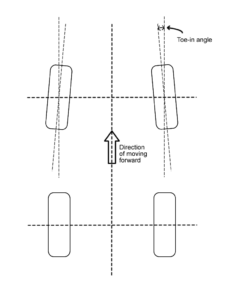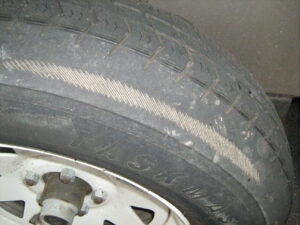Many Chevrolet service customers ask why alignment is important and why having one performed once a year is a small investment to make in the future of your vehicle. Your vehicle’s alignment is based on a geometric shape, and as long as the “shape” retains its trueness, you can be assured that you’ll get the most out of not only your tires, but your vehicle’s suspension components as well. Here’s a little explanation and answers to some common questions we receive often from our loyal customers in our Chevrolet service department.
Because your Chevrolet has been designed to take on just about any road ahead, it must be able to handle all of those road conditions no matter what; be it a smooth, freshly paved blacktop or more bumpy conditions. Because your suspension must adapt quickly to the changes and then revert back to it’s original place, it is very important that your tires maintain a consistent contact with the road at all times. This not only ensures tire life, but more importantly, ensures your safety.
If your vehicle’s alignment angles are off it can mean many different things. You may have a worn out suspension component that needs to be addressed. Additionally, if worn out suspension components are not replaced in a timely fashion when needed, this can also affect your alignment as well as safety. That is why we suggest having the alignment of your Chevrolet vehicle assessed and adjusted as needed once a year.
There are two major alignment angles that you, as a consumer, should know about. Having knowledge of these three elements will help you understand your vehicle better, and will also guard against unneeded repairs should you decide to take your vehicle elsewhere. The first angle is known as “toe.”  Your tire’s “toe” describes the angle at which the front of the tires are heading. If the front of the tires seems to point inward (like in the picture above) this is known as toe in, if it was opposite (the fronts were pointed out) it is known as toe out. Improperly adjusted toe can lead to premature tire wear. If your vehicle’s toe is out of adjustment, you can tell by feeling the tire, if it doesn’t feel smooth on the tread and the edges of each patch of tread feels like it is sticking up, or “feathered,” you likely have a toe issue. For the life of your tires, it is recommended that you have your alignment adjusted to fix this.
Your tire’s “toe” describes the angle at which the front of the tires are heading. If the front of the tires seems to point inward (like in the picture above) this is known as toe in, if it was opposite (the fronts were pointed out) it is known as toe out. Improperly adjusted toe can lead to premature tire wear. If your vehicle’s toe is out of adjustment, you can tell by feeling the tire, if it doesn’t feel smooth on the tread and the edges of each patch of tread feels like it is sticking up, or “feathered,” you likely have a toe issue. For the life of your tires, it is recommended that you have your alignment adjusted to fix this.
The second angle you should know about is called “camber.” Think of camber as a “leaning angle.” In other words, the amount at which the top of the tire leans in or out. You may have noticed (or perhaps you’ll notice now that it’s brought up) that on most cars, the rear tires are tilted in slightly, this is camber. And no, all vehicles do have some tilt to the rear wheels to assist with handling.
You’ll know it is out of adjustment when the vehicle pulls to one side. This is due to one of the tires leaning, from the top, more towards one side and pulling the vehicle that way. If left unadjusted you tires can look like this:

The tire in the image above is a fairly extreme case, but this is what your tire(s) might look like if you leave your alignment issues unaddressed for too long. That tire is completely unsafe, and needs immediate replacement. Additionally, unaddressed alignment issues can also wear out your suspension components. This is why spending a few dollars and some of your time once a year on alignment checks can help to prevent costly repairs down the road.
There are other alignment angles and if you want to learn about them, there is a good article here. But if you have questions about your alignment or want information of any kind, we invite you to call our service department at (203) 920-4767 and someone will be happy and eager to assist you and answer all of your questions.
